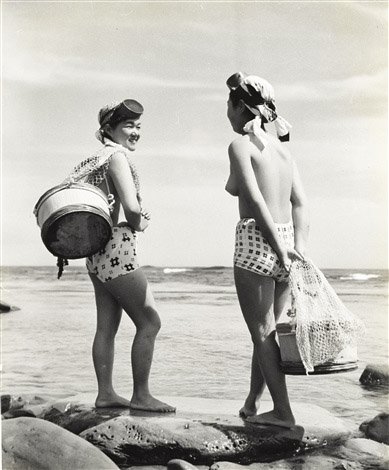In the serene waters of Japan, a unique people called the Ama, also known as women of the sea, persists as a dwindling community. Traditionally clad in cotton clothes and without any diving equipment, these women embark on a journey beneath the waves, searching for seafood and precious sea pearls. With a history spanning thousands of years, they are one of Japan’s oldest surviving traditions, yet they face the challenge of fading away.
[Author: Aicha Sidki for Yokogao magazine]

The evolution of their attire paints a captivating story of changing values, going from the simplicity of skinny dipping to the introduction of sleek wetsuits. Up until 1955, these women of the sea wore a white Ama-chaku — a loincloth — and a head covering, navigating frigid waters with exposed upper bodies. Using a white loincloth is believed by some to serve as a deterrent against sharks. Star-shaped patterns added a touch of superstition, bringing forth good luck.
Fast forward to the present day, and their aesthetic has transformed with the introduction of goggles for better clarity marking the initial shift. By the 1960s, they embraced full black swimsuits, a more modest blend of tradition and modernity.
Equipped with goggles and wooden barrels, the Ama heavily resemble their Korean counterparts, the Haenyeo. They share these single-windowed masks, fins, and wetsuits, forming a modern arsenal for the age-old tradition. However, their resemblance extends beyond attire; it also involves intriguing diving techniques.
Upon surfacing, a distinctive sound can be heard, namely the Isobue, or sea whistle. These women of the sea use this unique diving technique to limit damage to the lungs and allow them to execute short consecutive dives with brief intervals. This showcases not only their physical strength but also the artistry of their traditions.











[Photograpers: Fosco Maraini and Iwase Yoshiyuki]










